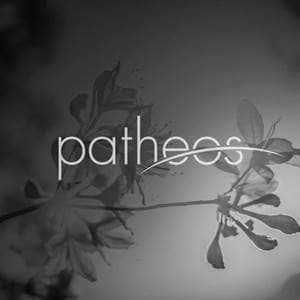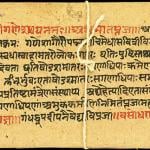This is a tale of soap operas where a solution for an intractable problem in mathematics brought so many skeletons out of the Mathematics world that it is amazing! Poincare had a conjecture in Mathematics. The original articulation of the conjecture was as follows:
Consider a compact 3-dimensional manifold V without boundary. Is it possible that the fundamental group of V could be trivial, even though V is not homeomorphic to the 3-dimensional sphere?
Something more on the Poincaré conjecture
In mathematics, the Poincaré conjecture (IPA: [pwɛ̃kaˈʀe])[1] is a conjecture about the characterization of the three-dimensional sphere amongst three-dimensional manifolds. The conjecture concerns a space that locally looks like ordinary three dimensional space but is finite in size and lacks any boundary (a closed 3-manifold). The conjecture claims that if such a space has the additional property that each loop in the space can be continuously tightened to a point, then it is just a three-dimensional sphere. An analogous result has been known in higher dimensions for some time.
After nearly a century of effort by mathematicians, a series of papers made available in 2002 and 2003 by Grigori Perelman, following the program of Richard Hamilton, sketched a solution. Three groups of mathematicians have produced works filling in the details of Perelman’s proof.
The Poincaré conjecture is one of the most important questions in topology. It is one of the seven Millennium Prize Problems for which the Clay Mathematics Institute is offering a $1,000,000 prize for a correct solution. Perelman’s work is under review and the prize money could be awarded if the proof is considered valid two years after publication.
 And now Perelman’s proof is supposed be the Breakthrough of the Year by the Science Magazine. It is not usual that tough, hitherto unsolvable questions of Math and Science are solved.. here is however one of them.
And now Perelman’s proof is supposed be the Breakthrough of the Year by the Science Magazine. It is not usual that tough, hitherto unsolvable questions of Math and Science are solved.. here is however one of them.
To mathematicians, Grigori Perelman’s proof of the Poincaré conjecture qualifies at least as the Breakthrough of the Decade. But it has taken them a good part of that decade to convince themselves that it was for real. In 2006, nearly 4 years after the Russian mathematician released the first of three papers outlining the proof, researchers finally reached a consensus that Perelman had solved one of the subject’s most venerable problems. But the solution touched off a storm of controversy and drama that threatened to overshadow the brilliant work.
Perelman’s proof has fundamentally altered two distinct branches of mathematics. First, it solved a problem that for more than a century was the indigestible seed at the core of topology, the mathematical study of abstract shape. Most mathematicians expect that the work will lead to a much broader result, a proof of the geometrization conjecture: essentially, a "periodic table" that brings clarity to the study of three-dimensional spaces, much as Mendeleev’s table did for chemistry.
While bringing new results to topology, Perelman’s work brought new techniques to geometry. It cemented the central role of geometric evolution equations, powerful machinery for transforming hard-to-work-with spaces into more-manageable ones. Earlier studies of such equations always ran into "singularities" at which the equations break down. Perelman dynamited that roadblock.
"This is the first time that mathematicians have been able to understand the structure of singularities and the development of such a complicated system," said Shing-Tung Yau of Harvard University at a lecture in Beijing this summer. "The methods developed … should shed light on many natural systems, such as the Navier-Stokes equation [of fluid dynamics] and the Einstein equation [of general relativity]."
Unruly spaces
Henri Poincaré, who posed his problem in 1904, is generally regarded as the founder of topology, the first mathematician to clearly distinguish it from analysis (the branch of mathematics that evolved from calculus) and geometry. Topology is often described as "rubbersheet geometry," because it deals with properties of surfaces that can undergo arbitrary amounts of stretching. Tearing and its opposite, sewing, are not allowed.Our bodies, and most of the familiar objects they interact with, have three dimensions. Their surfaces, however, have only two. As far as topology is concerned, two-dimensional surfaces with no boundary (those that wrap around and close in on themselves, as our skin does) have essentially only one distinguishing feature: the number of holes in the surface. A surface with no holes is a sphere; a surface with one hole is a torus; and so on. A sphere can never be turned into a torus, or vice versa.
Three-dimensional objects with 2D surfaces, however, are just the beginning. For example, it is possible to define curved 3D spaces as boundaries of 4D objects. Human beings can only dimly visualize such spaces, but mathematicians can use symbolic notation to describe them and explore their properties. Poincaré developed an ingenious tool, called the "fundamental group," for detecting holes, twists, and other features in spaces of any dimension. He conjectured that a 3D space cannot hide any interesting topology from the fundamental group. That is, a 3D space with a "trivial" fundamental group must be a hypersphere: the boundary of a ball in 4D space.
Although simple to state, Poincaré’s conjecture proved maddeningly difficult to prove. By the early 1980s, mathematicians had proved analogous statements for spaces of every dimension higher than three–but not for the original one that Poincaré had pondered.
Many people also tried and Thurston and Hamilton was two of such aspirants.
In 1982, William Thurston (now of Cornell University) theorized that every 3D space can be carved up so that each piece has a unique uniform geometry, and that those geometries come in only eight possible types. This hypothesis became known as the geometrization conjecture.
If true, Thurston’s insight would solve the Poincaré conjecture, because a sphere is the only one of the eight geometries that admits a trivial fundamental group. In 1982, Richard Hamilton (now of Columbia University) proposed a possible strategy for proving it: Start with any lumpy space, and then let it flow toward a uniform one. The result would be a tidy "geometrized" space à la Thurston. To guide the flow, Hamilton proposed a geometric evolution equation modeled after the heat equation of physics and named it "Ricci flow" in honor of Gregorio Ricci-Curbastro, an early differential geometer. In Ricci flow, regions of high curvature tend to diffuse out into the regions of lower curvature, until the space has equal curvature throughout.
Hamilton’s strategy works perfectly in 2D surfaces. Slender "necks," like the one seen on the cover of this issue, always expand. In 3D spaces, however, Ricci flow can run into snags. Necks sometimes pinch off, separating the space into regions with different uniform geometries. Although Hamilton did a great deal of pioneering work on Ricci flow, he could not tame the singularities. As a result, the whole program of research seemed to run aground in the mid-1990s. In 2000, when the Clay Mathematics Institute named the Poincaré conjecture as one of its $1 million Millennium Prize problems, most mathematicians believed that no breakthrough was in sight.
But it was Perelman who finally nailed it!
In fact, Perelman was already well on his way to a solution. In 1995, the 29-year-old St. Petersburg native had returned to Russia after a 3-year sojourn in the United States, where he had met Hamilton and learned about Ricci flow. For the next 7 years, he remained mostly incommunicado. Then, in November 2002, Perelman posted on the Internet the first of three preprints outlining a proposed proof of the geometrization conjecture.
To experts, it was immediately clear that Perelman had made a major breakthrough. It was in the title of the first section of the first paper: "Ricci Flow as a Gradient Flow." Perelman had spotted an important detail that Hamilton had missed: a quantity that always increases during the flow, giving it a direction. By analogy with statistical mechanics, the mathematics underlying the laws of thermodynamics, Perelman called the quantity "entropy."
The entropy ruled out specific singularities that had stymied Hamilton. To reach a safe harbor, however, Perelman still had to identify the remaining types of singularities that might cause problems. He had to show that they occurred one at a time instead of accumulating in an infinite pileup. Then, for each singularity, he had to show how to prune and smooth it before it could sabotage Ricci flow. Those steps would be enough to prove Poincaré. To complete the geometrization conjecture, Perelman had to show, additionally, that the "Ricci flow with surgery" procedure could be continued for an infinitely long time.
In 2003, when Perelman revisited the United States to lecture on his work, many mathematicians doubted that he could have pulled off all of these feats. By 2006, however, the mathematical community had finally caught up. Three separate manuscripts, each more than 300 pages in length, filled in key missing details of Perelman’s proof.
Two of the papers–one authored by Bruce Kleiner and John Lott of the University of Michigan, Ann Arbor, the other by John Morgan of Columbia University and Gang Tian of the Massachusetts Institute of Technology in Cambridge–stopped short of the geometrization conjecture, because Perelman’s explanation of the final step had been too sketchy. (Both groups are still working on it.) They did, however, include enough math to nail down the Poincaré conjecture.
The third paper, by Huai-Dong Cao of Lehigh University in Bethlehem, Pennsylvania, and Xi-Ping Zhu of Zhongshan University in Guangzhou, China, was less circumspect. Cao and Zhu claimed to have "the first written account of a complete proof of the Poincaré conjecture and the geometrization conjecture of Thurston." This summer, the International Mathematical Union (IMU) decided to award Perelman the Fields Medal, traditionally considered the highest honor in mathematics.
But all this also brought the fissures in the Mathematics world out in the open!!
Since then, the rosy glow of triumph has taken on darker hues. On 22 August, IMU President John Ball announced that Perelman had declined the Fields Medal. In an interview in The New Yorker, the reclusive mathematician said he was retiring from mathematics, disenchanted by unspecified lapses in "ethical standards" by colleagues. The New Yorker article also painted an unflattering portrait of Yau, intimating that he had claimed too much credit for his protégés Cao and Zhu.
In the ensuing months, hard feelings have abounded. Certain mathematicians claimed that their quotes were distorted in the New Yorker, and Yau threatened to sue. Kleiner and Lott complained that Cao and Zhu had copied a proof of theirs and claimed it as original, and the latter pair grudgingly printed an erratum acknowledging Kleiner and Lott’s priority.
This fall, the American Mathematical Society attempted to organize an all-star panel on the Poincaré and geometrization conjectures at its January 2007 meeting in New Orleans, Louisiana. According to Executive Director John Ewing, the effort fell apart when Lott refused to share the stage with Zhu.
Tags: Poincaré conjecture, Perelman, Mathematics
Powered by Qumana














